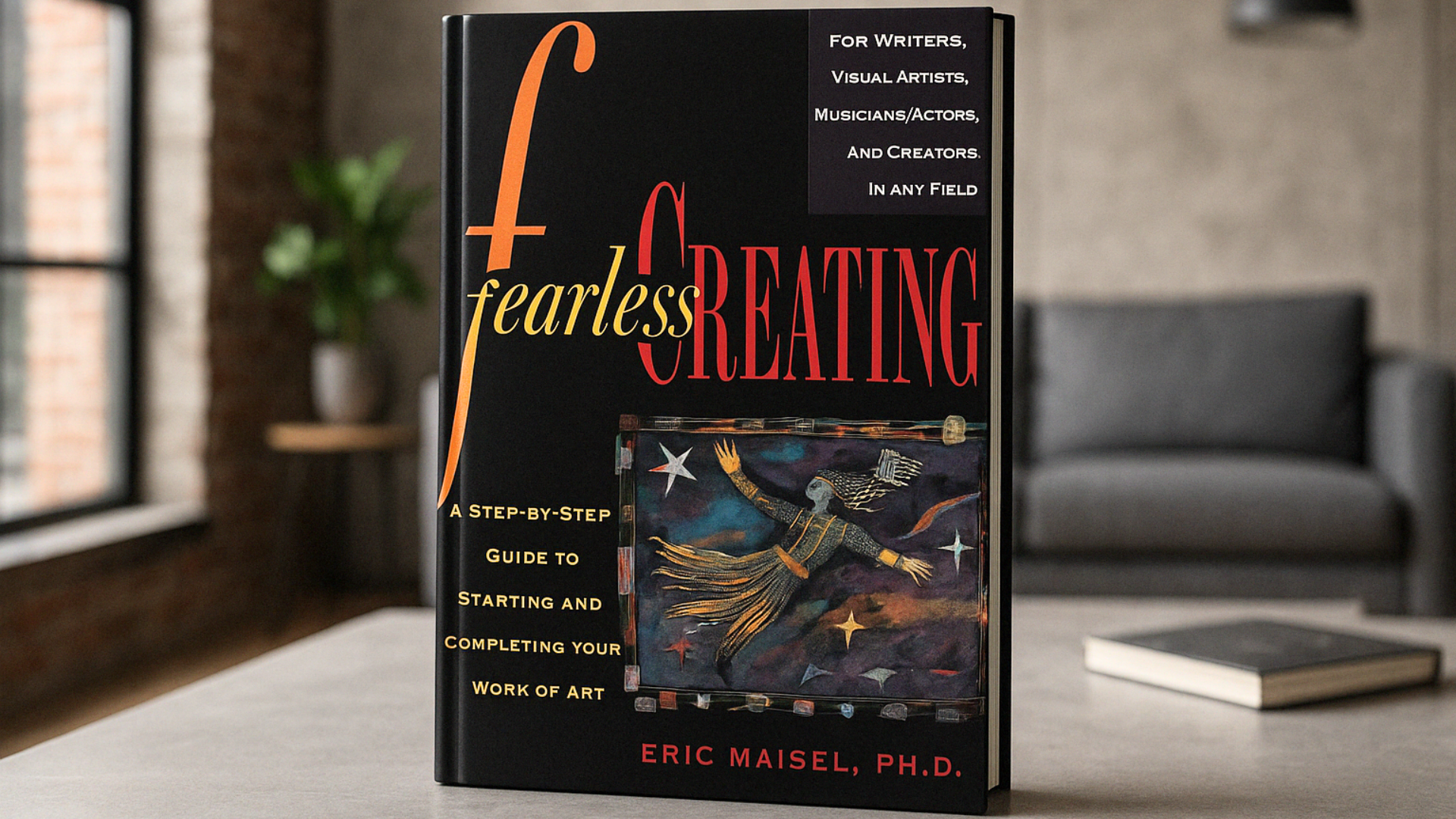Stuck in a Creative Rut? This Book Offers Real Insight

Book Review: Fearless Creating by Eric Maisel
A bold and emotionally grounded guide to understanding the creative process and facing what holds us back
In Fearless Creating, Eric Maisel offers a refreshingly honest and psychologically attuned framework for navigating the complex emotions that often accompany creative work. Rather than bypass fear, doubt, or resistance, Maisel encourages readers to meet these challenges directly. He reframes them as essential parts of the creative path rather than signs of failure.
This is not a motivational book filled with cheerful encouragement. It is a clear-eyed and compassionate look at what it truly means to make something real. Maisel invites us to bring our full selves to the work, especially the parts we are often taught to silence or ignore.
What the book promises
Maisel promises to walk readers through the full emotional arc of creating something meaningful. He introduces six core stages of the process: wishing, choosing, starting, working, completing, and showing. Rather than presenting these as clean steps in a linear process, he treats them as emotionally distinct moments, each with its own set of psychological challenges.
He also promises to help readers better understand the anxieties that surface during each of these stages. Rather than suggesting we should avoid fear or doubt, Maisel encourages readers to work with those feelings and continue forward anyway. His approach blends creative philosophy with therapeutic insight, offering both structure and self-awareness.
The book promises to be a steady companion for those who want to create from a place of honesty. It does not sugarcoat the emotional landscape, but it does provide a clear path through it.
What the book delivers
Maisel delivers a structured and emotionally intelligent guide for creatives who want to go deeper. Each chapter focuses on one stage of the process and explores the internal obstacles that often appear. Rather than offering generic advice, Maisel gives the reader tools for naming and navigating emotional states like resistance, perfectionism, avoidance, and fear.
He introduces clear and memorable language for common internal experiences, including terms like "hungry-mind anxiety" and "weakened-mind anxiety." This gives readers a shared vocabulary for understanding what is happening when the work feels overwhelming or unreachable.
The book includes a variety of reflective practices, including journaling prompts, visualizations, and mental strategies. Each one is meant to be used not just as a way to feel better, but as a way to stay present with the work. Maisel treats the creative process as a form of emotional growth. He sees it as a path toward becoming more awake to oneself.
His psychological approach is what makes the book stand out. He does not separate the emotional life of the artist from the act of making art. Instead, he shows how the two are deeply intertwined.
Style and structure
Maisel writes with a tone that is firm, reflective, and grounded. His words are clear and considered. He does not rush or distract. He moves carefully through each idea, allowing the reader time to absorb what is being asked of them. This creates a sense of steadiness that feels supportive, especially for those feeling stuck or overwhelmed.
The book is organized into chapters that correspond to each creative stage. Within each, Maisel offers insights, examples, and actionable reflections. The structure is consistent and thoughtful, which helps readers navigate complex material at their own pace.
This is a book best read slowly, with time to pause and reflect. It does not follow a quick-fix model. Instead, it supports a more sustainable and emotionally honest relationship to creative work.
Where the book shines
The book shines in its emotional clarity. Maisel has an exceptional ability to name the psychological experiences that many creatives face but do not know how to articulate. He gives readers a way to see their doubt and fear not as flaws, but as natural responses to doing something that matters.
He also reframes creativity as a choice rather than a gift. He emphasizes that creating requires presence, persistence, and emotional courage. This shift is empowering. It gives readers agency without ignoring the real challenges they face.
Maisel’s approach is deeply respectful. He assumes that the reader is capable of serious work and offers tools that are both practical and meaningful. There is no empty encouragement here. Just grounded insight and honest support.
Light limitations
The tone of the book may feel intense for readers who are early in their creative journey or looking for a playful approach. Maisel does not focus on fun or inspiration. His goal is depth and emotional growth. For some, that may feel too serious in certain seasons of life.
Because the content is focused on emotional and internal work, readers looking for advice on discipline, scheduling, or creative habits may need to pair this book with more tactical resources. Maisel is more concerned with why we stop than with how to organize our time.
The writing can also feel dense at times. It asks the reader to engage fully, and that may not be the right fit for those seeking light reading. However, for readers who are ready to go deeper, the book offers lasting insight.
Final thoughts
Fearless Creating is an honest and emotionally rich guide for anyone navigating the complex landscape of creative work. Eric Maisel offers not just encouragement, but understanding. He shows that the creative path is not about avoiding fear. It is about learning how to stand inside it and continue anyway.
This book will not remove the hard parts of creating. It will help you meet them with more clarity, presence, and inner strength. Maisel reminds us that the creative process is not just about the work we produce. It is about the person we become in the process of making it.
Highly recommended for writers, artists, therapists, and anyone doing work that feels both vulnerable and meaningful.